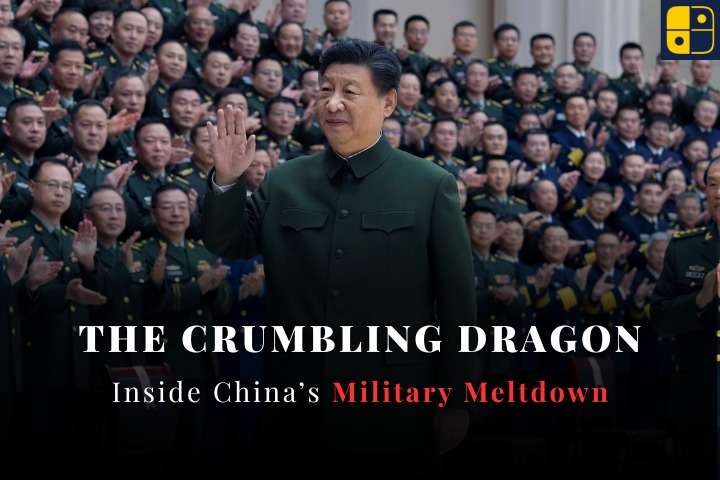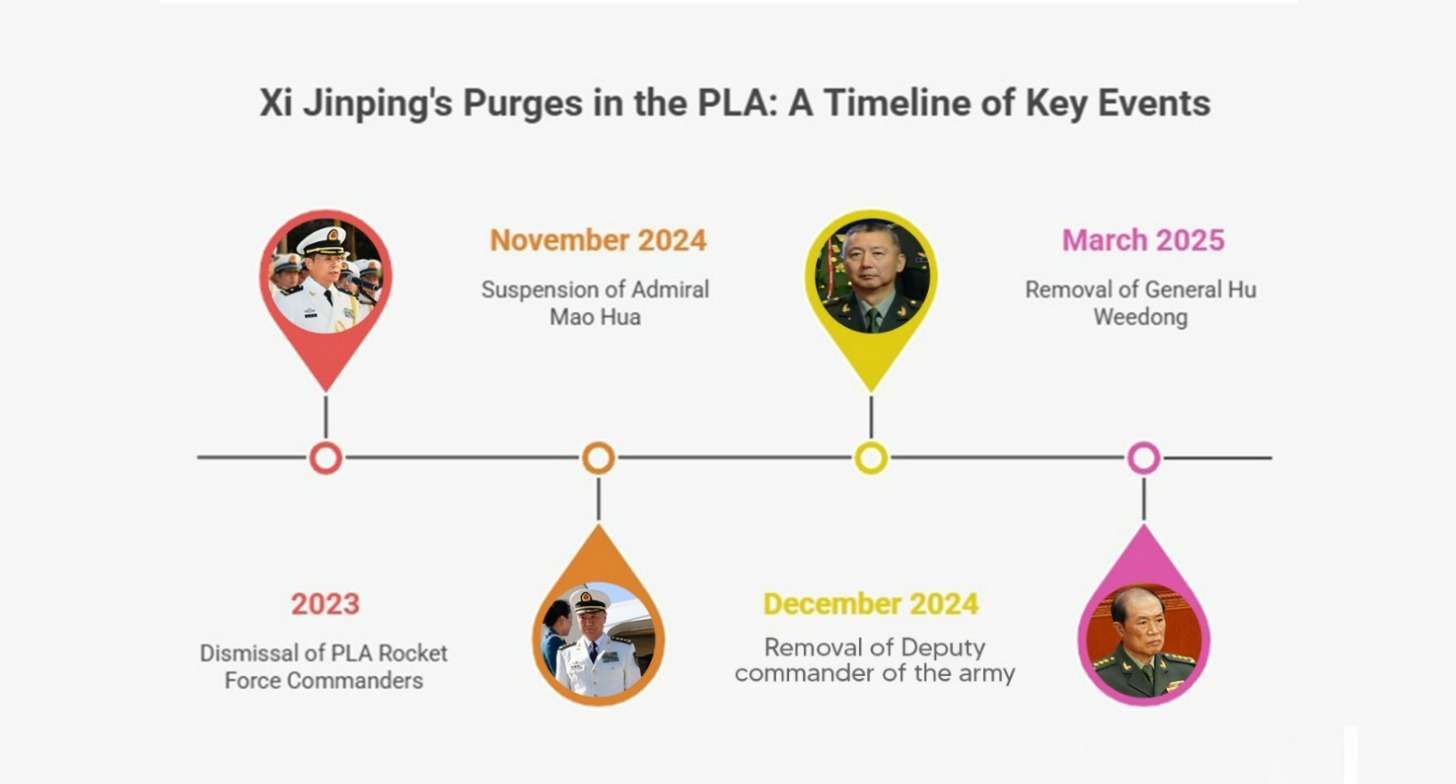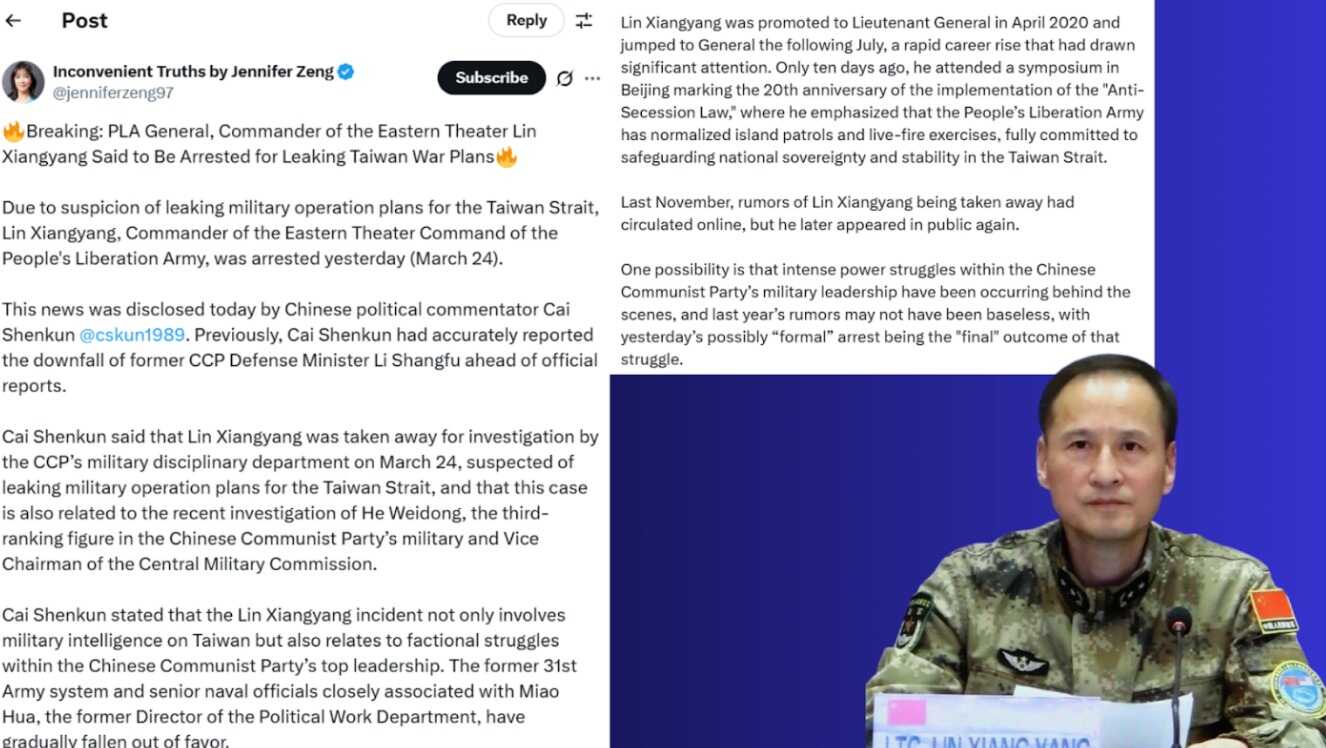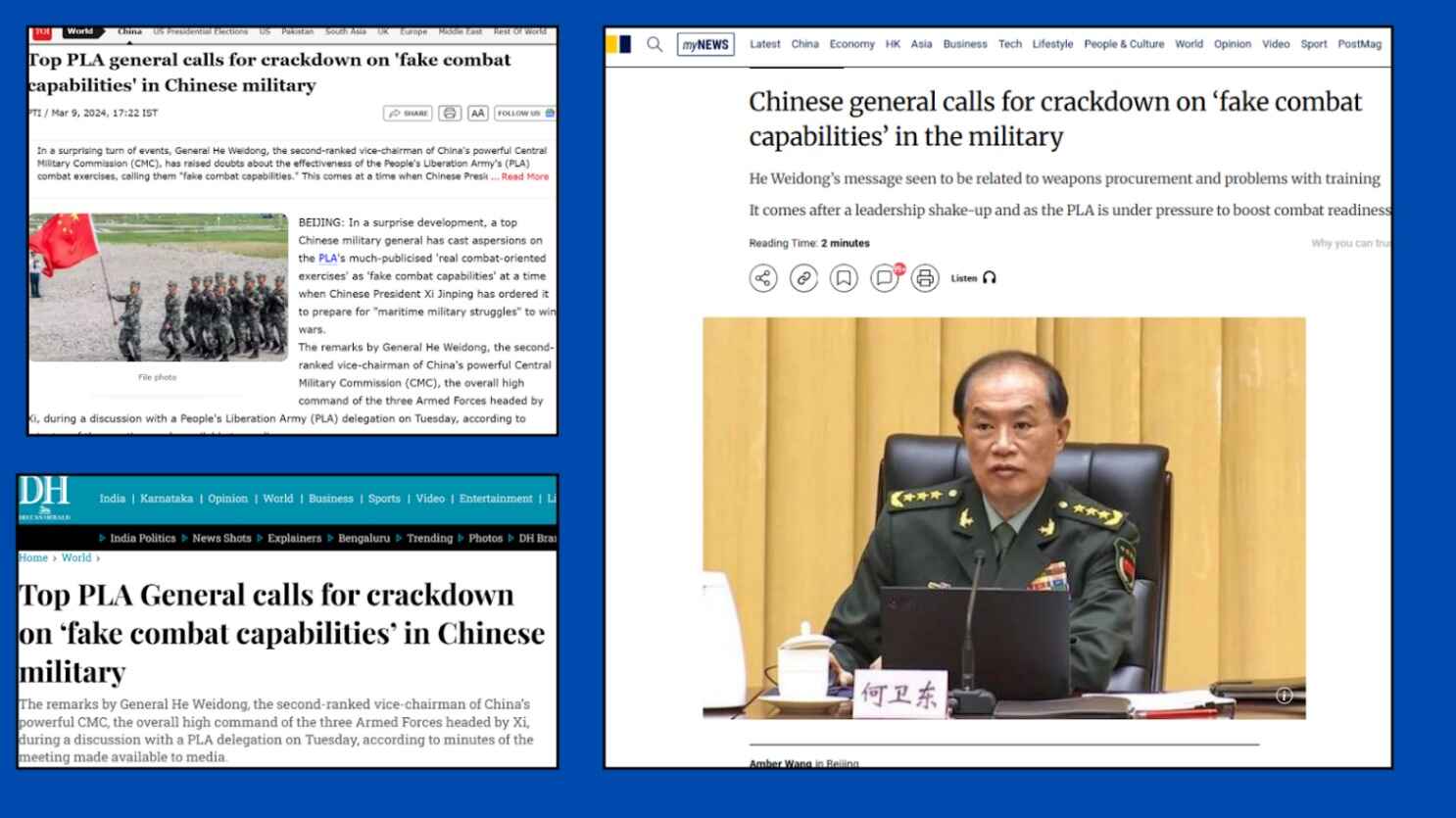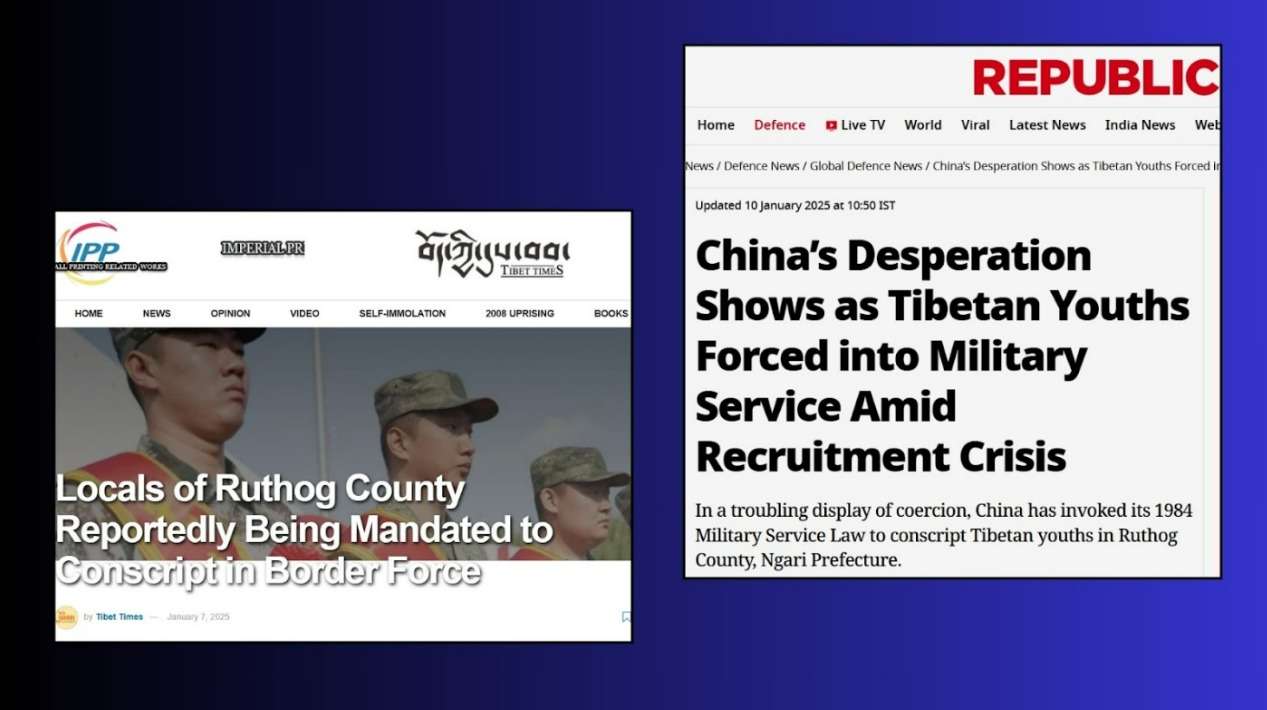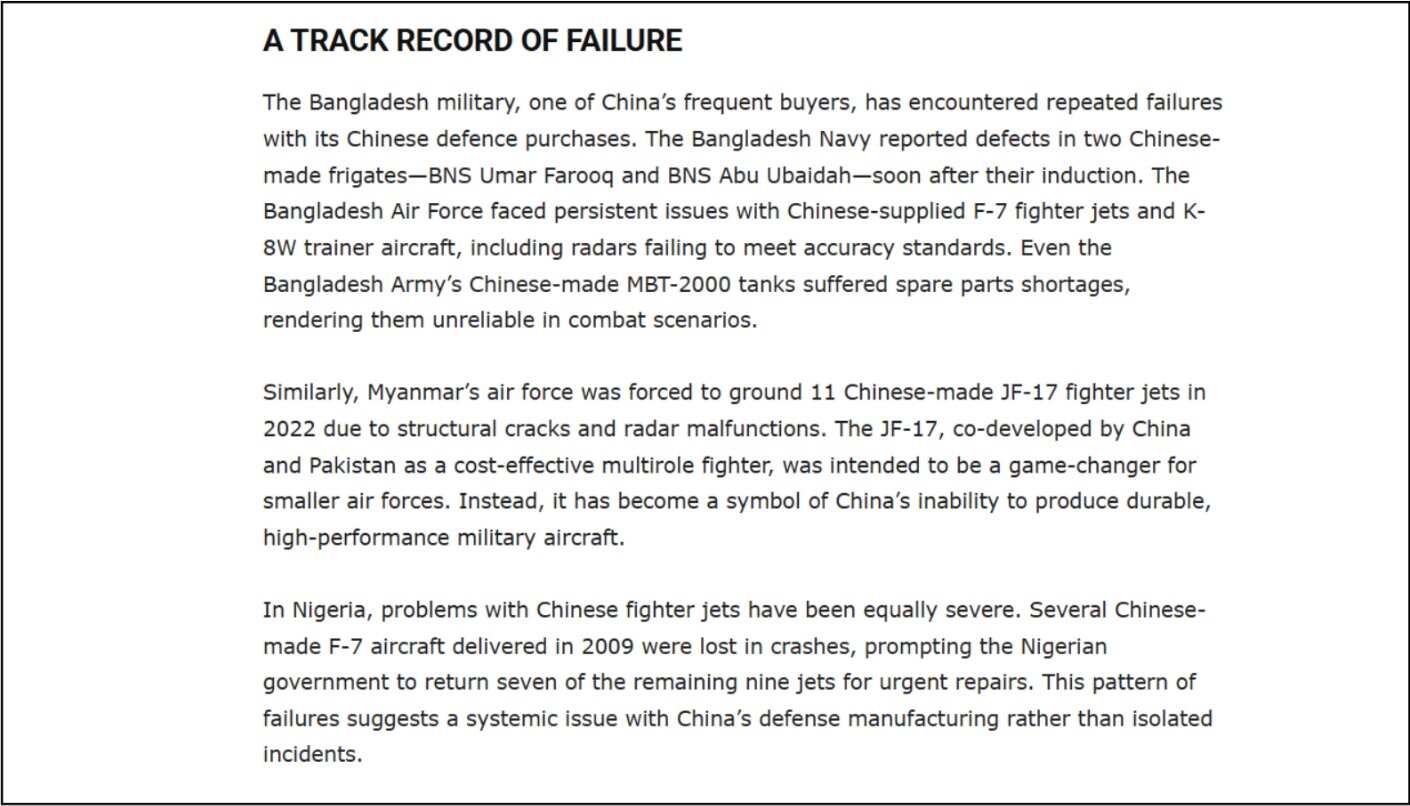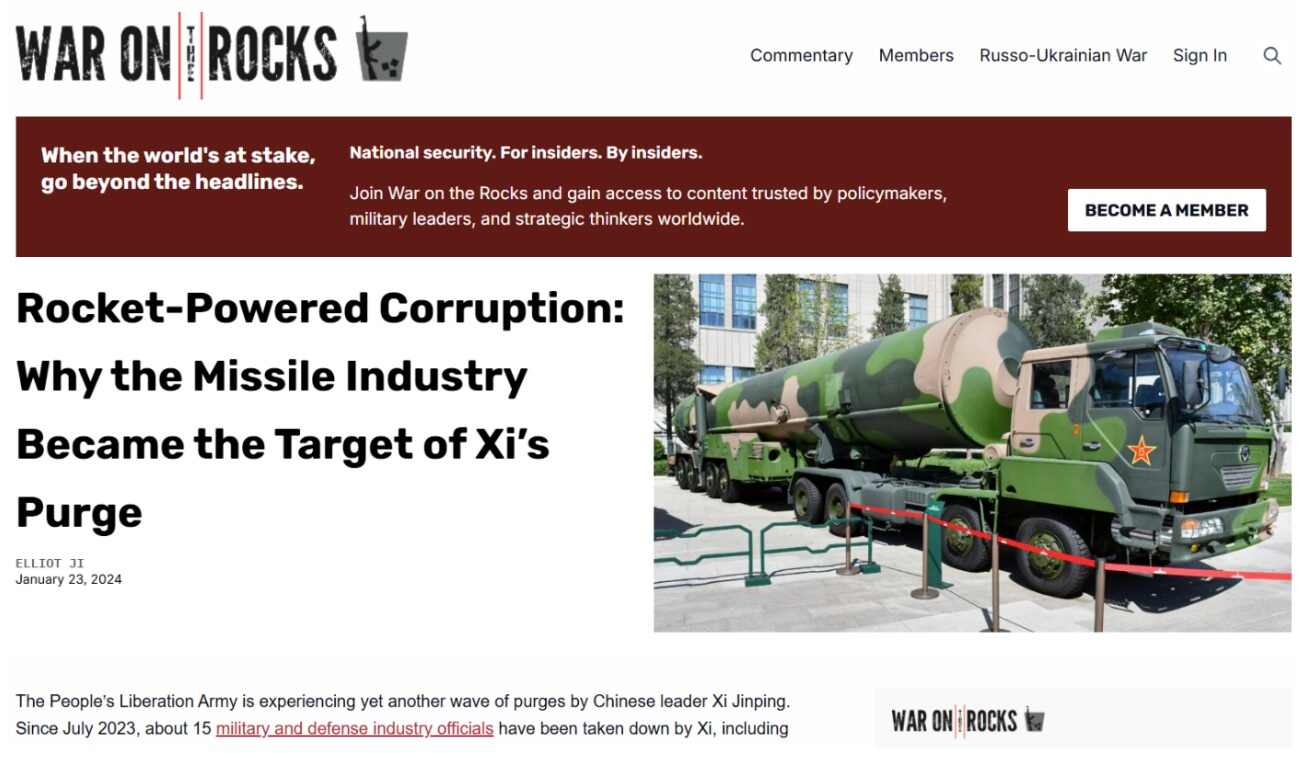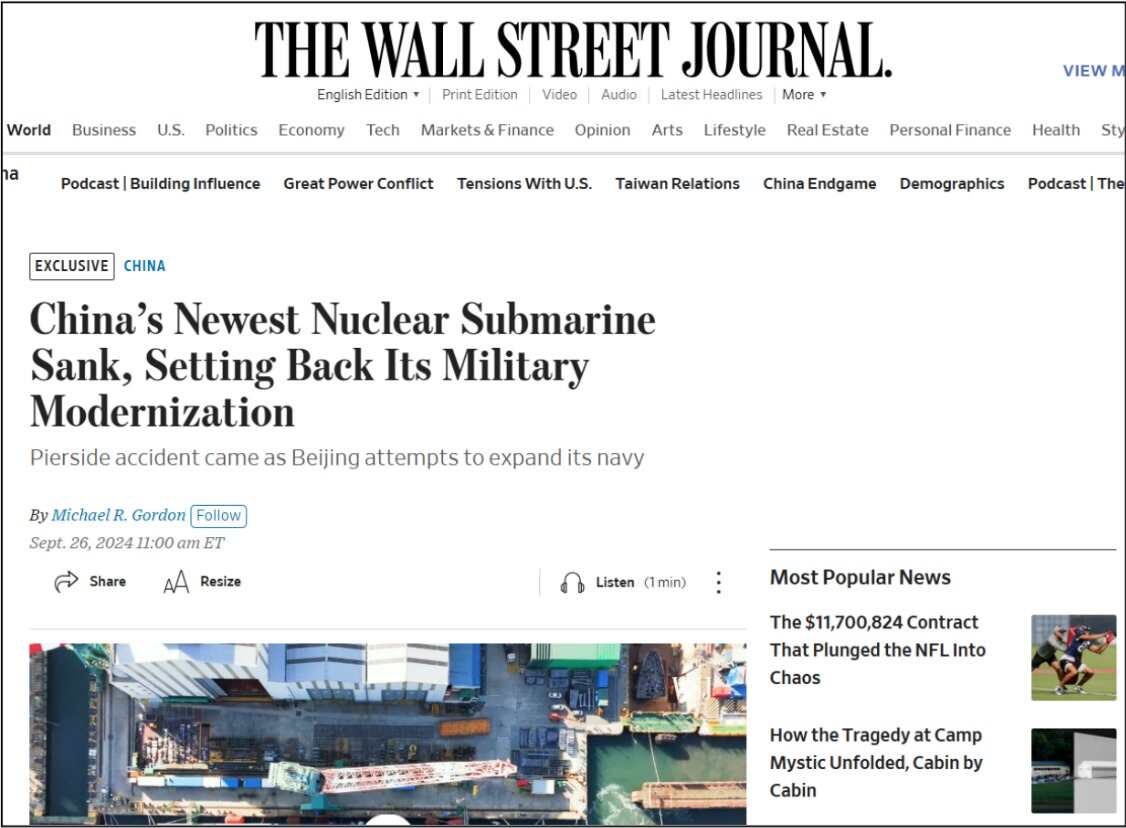A Troubling sign of instability in Beijing, in August 2025, it was reported that a second senior Chinese diplomat was taken away for questioning. This is a clear demonstration of how President Xi Jinping’s sweeping purges are no longer confined to the military and now extending to China’s diplomatic corps. 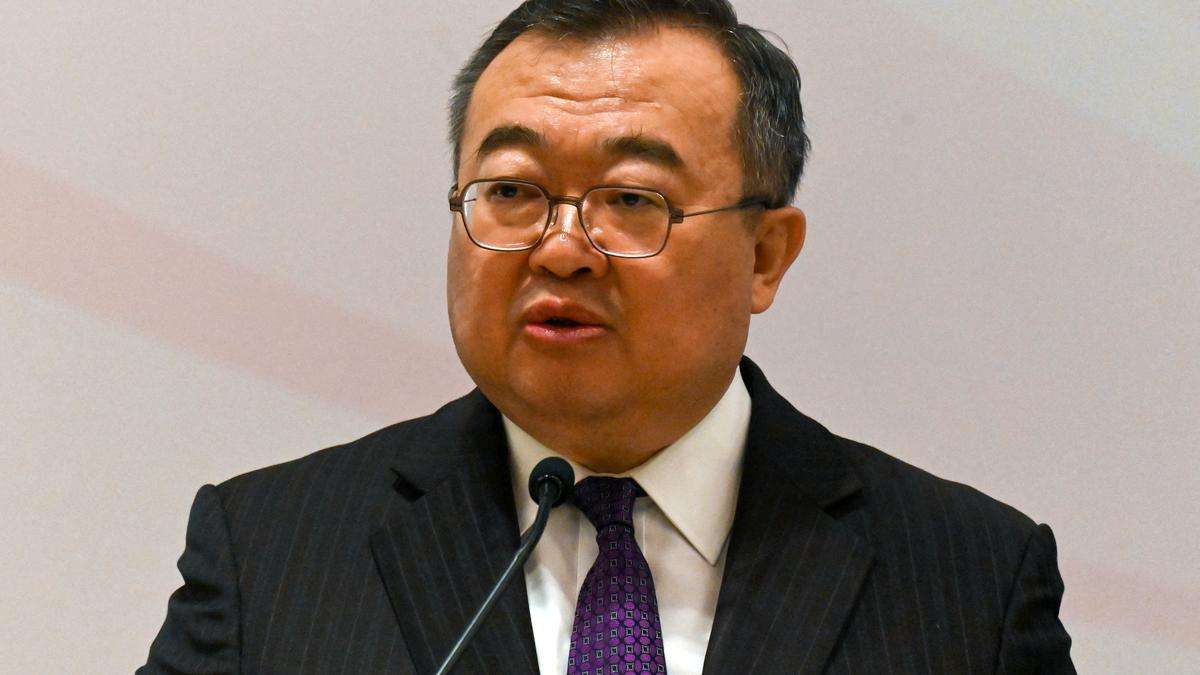
This is happening in what some analysts describe as a looming real military crisis within the PLA. The PLA, which was once considered a principal element of China’s global ambitions, faces multiple leadership purges, equipment failures, and institutional threats that could halt the rise of China as an emerging military superpower.
Introduction
China’s People’s Liberation Army (PLA) – thought to be the world’s rising military power – is now allegedly in huge collapse and facing a real military crisis supported by mass leadership purges, major equipment failures and genuine systemic challenges that will cripple China’s military capabilities and global ambitions.
Purge of Military Leaders
Since President Xi Jinping came to power in 2012, a major characteristic of his regime has been the mass purge of senior military leaders. These are actions taken by Xi to tighten his control of the military and to eliminate any future threats to his authority which he has framed around an anti-corruption campaign.
Clearance of Top Military Officials
Since 2012, purging senior military leaders has become a defining feature of President Xi Jinping’s administration. The purges are part of Xi’s broader effort to consolidate power over the military and crush any suitable challengers to his authority, often presented as an anti-corruption initiative.
Important personalities impacted by the purges include:
General Hu Weedong: The PLA’s second-ranking Genera, and Vice Chair of the Central Military Commission (CMC) Hu Weedong was abruptly removed from his post in March 2025 and disappeared shortly thereafter. His removal was the first to occur from someone of that rank in over sixty years. His unexpected disappearance caused a huge stir with reports confirming his purge for corruption by mid-April.
Admiral Mao Hua: A member of the CMC and head of the political work department (responsible for military loyalty), Mao Hua was suspended in November 2024 for serious violations of discipline, a common term for corruption. His removal was a significant blow to maintaining loyalty within the ranks.
PLA Rocket Force Commanders: In 2023, Xi dismissed General Lee Yuchao and his deputy, Leo Guong Bin, the top commanders of the PLA Rocket Force, which manages China’s nuclear weapons. Accusations of corruption and their removal disputed plans to modernize China’s nuclear arsenal by 2027.
Other Senior Officers: Lieutenant General Yu Hatowo (deputy commander of the army) and Vice Admiral Lee Pang Chong (naval commander in the Southern Theater Command) were both removed in December 2024. Xiao Ki, a former figure in the PLA’s general logistics department, was arrested around March 2025. Overall, in 2024 alone, at least 58 high-ranking officials and over 640,000 cadres were punished across the party-state system.
The Central Military Commission (CMC), which Hu Weedong and Mao Hua were part of, is China’s top decision-making body on military affairs, overseeing everything from weapons procurement to combat preparedness. Xi Jinping’s position as CMC Chairman is considered his second most important after General Secretary of the Communist Party of China, even more significant than his role as Chinese president. The Defence Minister is generally a part of the CMC, but the current minister, Dong Jun, has not been made a CMC member, suggesting a further decline in the status of the Ministry of Defence.
While corruption is a serious issue within the PLA, these purges also serve to consolidate Xi Jinping’s power. However, this culling at the top implies instability and inefficiency within the system. The purges have created a leadership vacuum, leading to a loss of experience and stability, and contributing to low morale and paranoia within the PLA.
Operational Failures and Internal Disarray
The impact of these purges on China’s military capabilities has been starkly displayed. Operation Straight Thunder 2025A, a massive joint military exercise intended to project Chinese power in the Taiwan Strait, nearly didn’t happen due to the detention of generals Hu Weedong and Lin Xiangyang.While they were apparently brought back to lead the drills, the exercise intended to last a week ended abruptly after just two days. Xi’s team reportedly feared Hu Weedong would somehow draw them into a real conflict with live weapons and terminated it on account of Hu’s influence. It made the PLA appear disorganized and weak.
Internal issues extend beyond leadership. Morale within the PLA is reportedly low, with soldiers and officers wondering who’s next. There are concerns regarding fake combat capabilities, with commanders allegedly reporting fake training results, fake readiness reports to keep Xi happy. This culture of lying results in the PLA’s actual strength to be way less than what is reported, as units are often undertrained and underequipped.
Retrenchment Crisis and Structural Problems
The PLA is grappling with a retrenchment crisis, a challenge that threatens to disrupt China’s aspirations of being a global power. The one-child policy is partly responsible; this policy created a generation of only children whose parents are instinctively protective, and therefore would not want to see their only child risk his life in military service.
Other factors include economic opportunity. In addition, China’s private sector offers in-demand opportunities that earn substantially more than military pay (an average of $1,500-$1,600 a month in specialized jobs) for rewarding jobs in fields not limited to technology and finance.
The adherence to older ways of the PLA, where promotions are tied to political loyalty rather than merit, puts off ambitious young people who don’t see the opportunity to advance.
Demographics: China’s aging population means a shrinking pool of young potential recruits each year.
In one desperate measure, China has resorted to enforcing an old 1984 law, the military service law, to force Tibetans to enlist in the PLA in Rut County, Tibet.
PLA suffers from inherent structural problems:
Party Control: Unlike most national militaries, the PLA’s primary allegiance is to the Chinese Communist Party (CCP), not the state. This means political priorities often override military needs, leading to decisions that are not always optimal for battlefield success. Political commissars and party committees embedded in units create red tape and slow down decision-making, which is critical in modern warfare.
Training Weaknesses: Training often emphasizes discipline and political indoctrination over critical thinking, problem-solving, or handling complex technology, inadequately preparing soldiers for modern battlefields.
Pervasive Equipment Failures
Despite China’s efforts to showcase advanced military technology, the sources indicate a serious problem with the quality and reliability of its equipment.
Exports Failures: Countries like Myanmar, Nigeria, and Pakistan have experienced spectacular failures with Chinese-made equipment, including:
JF-17 Thunder jets grounded by Myanmar due to cracked frames and ineffective radars.
F7 jets purchased by Nigeria, which faced multiple crashes and required most of the fleet to be returned for extensive repairs.
JF-17 jets operated by Pakistan experiencing crashes due to manufacturing defects, such as stabilizers breaking off in flight.
F22P frigates in Pakistan’s Navy suffering from quickly wearing out engines and unreliable sensors, with FM90 missile systems failing to lock onto targets.
Bangladesh reporting defects in Chinese frigates and poor radar performance in F7 jets and K8W trainer planes, with their MBT2000 tanks largely inactive due to lack of spare parts.
Internal PLA Issues: These export failures suggest similar issues with equipment used by the PLA itself, undermining its ability to achieve strategic goals like securing the South China Sea or preparing for Taiwan conflicts.
Rocket Force Blunders: The Rocket Force, a vital part of China’s defense, has been involved in wild scandals, including reports of missiles filled with water instead of fuel and missile silos with lids that wouldn’t open. There are also reports of soldiers misusing rocket fuel for cooking hot pot due to supply shortages.
Manufacturing Problems
Fundamental problems with capability stem from manufacturing with replication, rather than trying to engender quality, from the 1990’s. Regardless of reverse engineering efforts to replicate foreign designs such as the J11 (from SU27 of Russia), J10 (-rather from LVI/of America since variable designs use F-16 design), china’s attempt at replication never exceeds the quality of the originals, (e.g., engines, radars, sensors) failures exist and China does not have a reputation to achieve the reliability before the failures started with unable little during the rush and ambitious objectives – e.g., high levels of corruption, short of poor practices and corruptness, some just avoiding the incorporation of high improbable expectations, at which the reductions company performance facilitate. The period of 2013-2017 had China arms exports fall a total of 23% from the 2018-2022 period to 2017.
Sinking Submarine: A ‘striking and embarrassing example’ happened in mid-2024 when a nuclear-powered Xiao-class submarine sank while it was still in the dry out position at a shipyard in Wuhan. US satellites measured the presence of the entire vessel more unrealistically under the water and surrounded by recovery cranes. This was a point of destitution for china, illustrating inadequate distinguish-check practices.
Historical Roots of Decline
The current military crisis within China is not a new phenomenon, but is deeply rooted in history.
Mao’s Legacy: The PLA (Peoples Liberation Army) was the armed wing of the CCP (China Communist Party), not a traditional national military. This contributed to a culture where political loyalty was more important than military effectiveness, and economic resources were drained from what could be professional military development.
Deng Xiaoping’s Era of Reform: During the 1980s, under Deng Xiaoping, the military was deprioritized to such a degree that not only was the defense budget cut, but the military had to take a back seat to economic growth. The changes in the late stages of Deng Xiaoping’s reforms did not delve deeper into the state of issues like corruption and politicized leadership to focus on military and modernization issues and left the PLA functioning with an older doctrinal model and older technology.
Taiwan Strait Crisis (1995-1996): China’s inability to engage when the United States sent a fleet of aircraft carriers to the Taiwan straits laid bare the pygmies of the PLA and encouraged the drive to modernization. Despite these forward motions, significant amounts of technologies were reverse engineered from foreign productions or simply not developed by the PLA. (e.g. the J15 fighter jet is largely based on a Soviet version, the SU33, and similar structures still experience engine failures).
Limited Combat Experience: The PLA has not engaged in a major war since the Sino-Vietnamese conflict in 1979. This has allowed them to develop but it has also left the military considerably untested and somewhat scripted in large scale exercises, limiting responsiveness in spontaneous approaches.
Persistent Logistics Problems: Supply chains remain a weak point, struggling to sustain operations in remote or contested areas, hampering power projection.
Consequences for China’s Global Standing
The PLA’s struggles are severely impacting China’s ambitions on the world stage.
Weakened Influence in Strategic Regions: China’s ability to assert control in areas like the South China Sea and execute potential actions regarding Taiwan is undermined by a disorganized military with supply chain headaches, outdated gear, and untested leaders. This makes any Taiwan plan seem less likely to succeed.
Damaged Arms Business: The unreliability of Chinese military equipment is causing other nations to look elsewhere for arms, damaging China’s influence-building through weapon sales. The US and Russia are reportedly stepping in to fill this gap.
Changes in Power Relations: The PLA’s effects are generating a clear move to gain ground by competitors. the United States is providing greater presence in the Indo-Pacific region with ships, aircraft, and training with allies in Japan, Australia, and India. China’s neighboring nations, including Vietnam, the Philippines, Indonesia, and Japan, are spending more on their military, increasingly cooperating with the US, and acting more boldly.
Domestic Pressure on Xi Jinping: President Xi’s political standing, influence, and credibly of power is based on having a strong military, and every incident or operational mistake is a dent in Xi’s grip of that influence and represents a huge problem for him and his consolidation of power.
Defense Industry Dilemma: The defense industry, reliant on PLA sales and exports, has a dilemma of quality issues that make it more difficulty to attract investment and develop the industry
Conclusion
The PLA is not just weaker than expected; it’s getting in the way of China’s rise. The combined impact of purges, operational failures, recruitment challenges, economic pressures, and quality control issues paints a picture of a military teetering on the edge of collapse, with long-lasting implications for China’s global aspiration.

